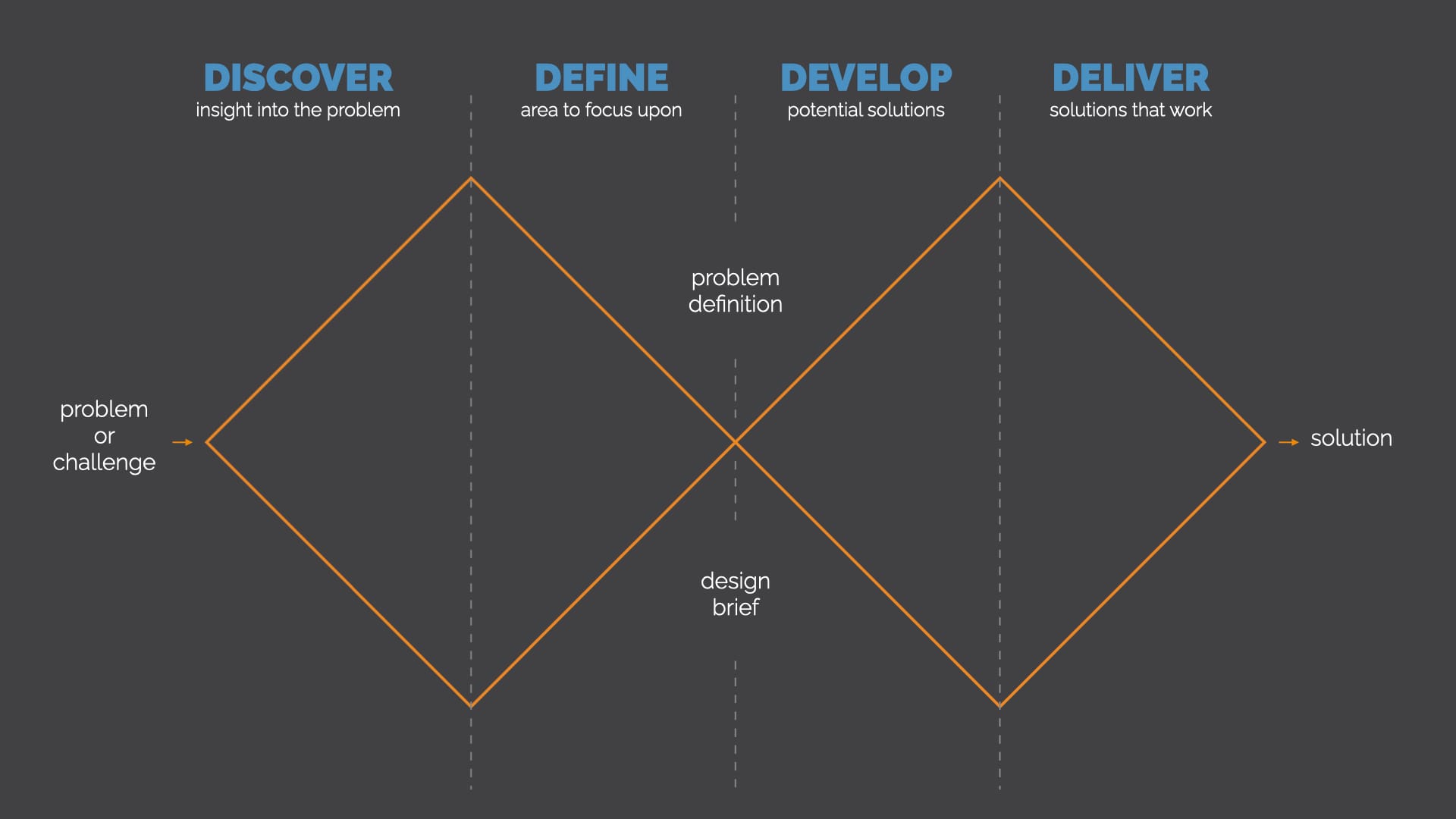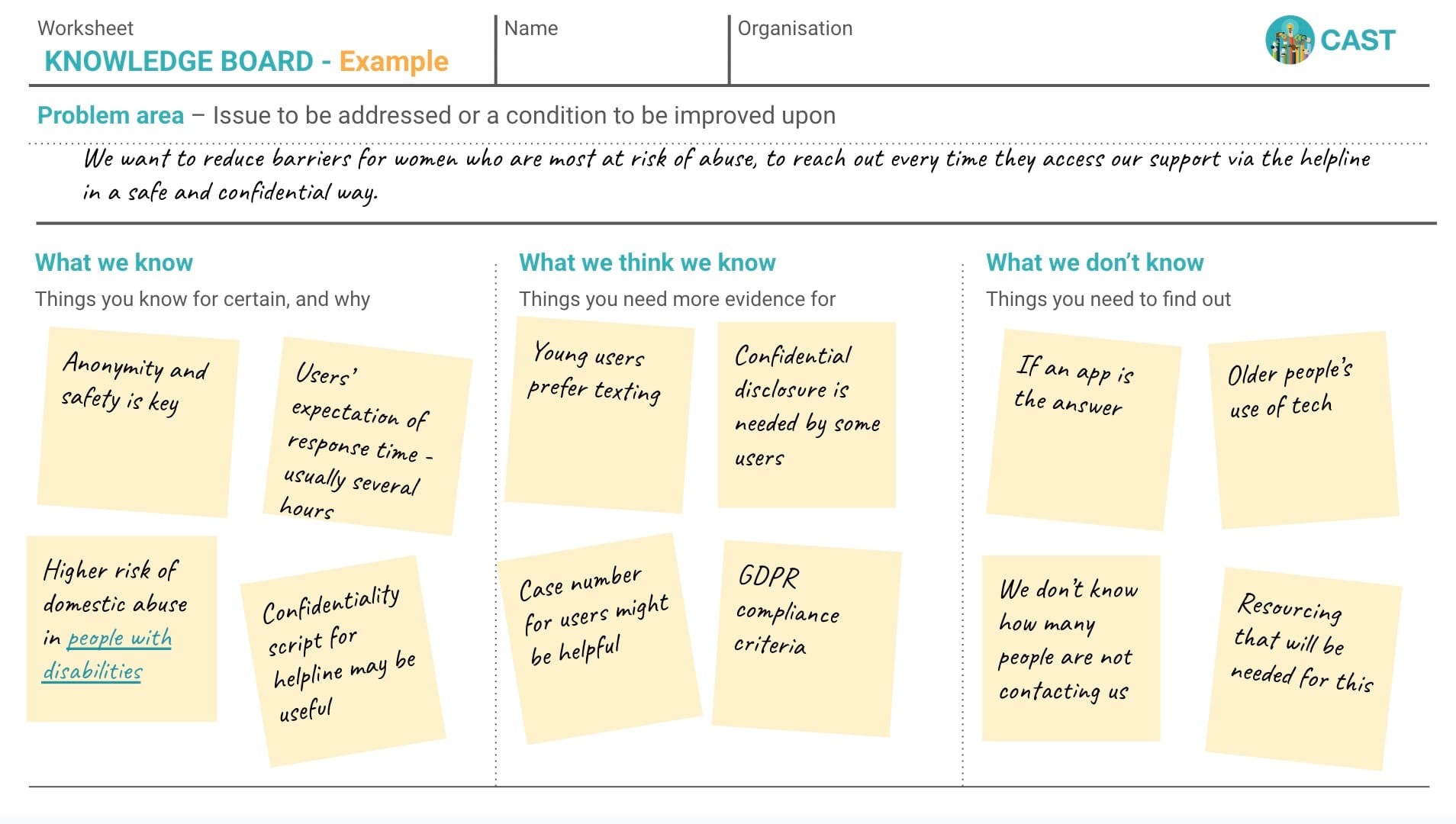How WCVA used Service Design to improve their enquiry system for staff and users

After the closure of the WCVA Helpdesk in 2018 and the redundancy of the Receptionist role in 2020. It resulted in a change of approach to managing external enquiries. Since then, all staff at a certain grade and below have been tasked with answering external enquiries. This resulted in an uncoordinated approach, a lack of clarity about who should be responding to what, and stress and annoyance to staff and callers.
Their questions were:
- How do we ensure we provide good customer service to people who make enquiries through inboxes, web forms and the phone line?
- How do we make the enquiry process as easy and efficient as possible for all staff involved?

Discovery
During the Discovery phase, the WCVA support team began researching the questions they wanted to answer with support from the course trainers.
They started off with mapping out ‘What we know’, ‘What we think we know’, and ‘What we don’t know’ on a knowledge board. Using a knowledge board is a really useful way to distinguish between what are assumptions, what is backed by evidence, and what you’d like to find out.

After creating their knowledge board, they continued their discovery phase by conducting a piece of user research to better understand the needs, behaviours, and experiences of their service users. They did this by conducting one-to-one interviews with staff members who mostly answered the enquiry calls, an all-staff survey, reviewing call data and checking which staff were part of the hunt group.
From this user research, the support team found that:
- Call handling was taking up inappropriate proportions of time for some staff members.
- There was an ongoing confusion about who the best person was to respond to an enquiry.
- There were multiple inboxes leading to duplication of work and inconsistent responses.
- Not enough information was being taken from callers.
- Staff weren't always able to reach the person they needed to transfer a call to.
Define
The User Needs Statements that the WCVA support team came up with:
- As a person who deals with enquiries, when I receive an enquiry from another member of staff, I need everyone to take a consistent approach, so that I get the information I need to respond effectively and efficiently.
- As a person on the hunt group, when I answer the phone, I need to know that I am not answering more than my fair share of calls, so that I am not spending too much time answering calls compared to my other tasks.
- As a member of staff at WCVA, when I start my role/the system changes, I need clarity on expectations of how that impacts my role, so that I can meet those expectations.
The How Might We statements that the WCVA support team came up with:
- How might we, best support staff to manage enquiries in an efficient way for everyone involved?
- How might we, ensure staff can easily and quickly identify the right person to forward enquiries to when they can’t answer themselves?
- How might we, minimise stress, annoyance and the time spent for everyone involved (caller, call handler, enquiry responder)?
If you’re interested in learning more about ‘How Might We’ and User Need statements, read our case study about Newydd.
Develop
Following the define phase, the team chose three activities to test with their staff and service users:
- To develop specific guidance and training on enquiry handling at WCVA. Build this into inductions for the applicable roles (and their line managers).
- To develop a user-friendly, smart enquiry form for all call handlers to use.
- To develop a Customer Service Policy.
The team look forward to trialling these with their staff.
For future course dates and helpful resources, sign up for our newsletter.


Like this post? Click below to share: